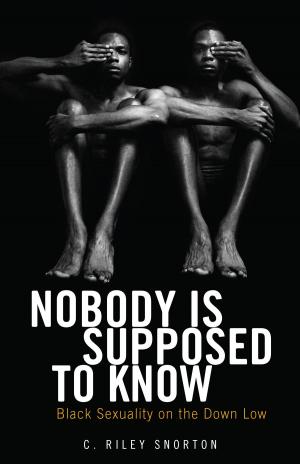Dead Matter
The Meaning of Iconic Corpses
Nonfiction, Social & Cultural Studies, Social Science, Cultural Studies, Death & Dying| Author: | Margaret Schwartz | ISBN: | 9781452945392 |
| Publisher: | University of Minnesota Press | Publication: | December 15, 2015 |
| Imprint: | Univ Of Minnesota Press | Language: | English |
| Author: | Margaret Schwartz |
| ISBN: | 9781452945392 |
| Publisher: | University of Minnesota Press |
| Publication: | December 15, 2015 |
| Imprint: | Univ Of Minnesota Press |
| Language: | English |
Taking as its starting point the significant role of the photograph in modern mourning practices—particularly those surrounding public figures—Dead Matter theorizes the connections between the body and the image by looking at the corpse as a special instance of a body that is simultaneously thing and representation. Arguing that the evolving cultural understanding of photographic realism structures our relationship to the corpse, the book outlines a new politics of representation in which some bodies are more visible (and vulnerable) in death than others.
To begin interpreting the corpse as a representational object referring to the deceased, Margaret Schwartz examines the association between photography and embalming—both as aesthetics and as mourning practices. She introduces the concept of photographic indexicality, using it as a metric for comprehending the relationship between the body of a dead leader (including Abraham Lincoln, Vladimir Lenin, and Eva Perón) and the “body politic” for which it stands. She considers bodies known as victims of atrocity like Emmett Till and the Syrian boy Hamsa al-Khateeb to better grasp the ways in which the corpse as object may be called on to signify a marginalized body politic, at the expense of the social identity of the deceased. And she contemplates “tabloid bodies” such as Princess Diana’s and Michael Jackson’s, asserting that these corpses must remain invisible in order to maintain the deceased as a source of textual and value production.
Ultimately concluding that the evolving cultural understanding of photographic realism structures our relationship to the corpse, Dead Matter outlines the new politics of representation, in which death is exiled in favor of the late capitalist reality of bare life.
Taking as its starting point the significant role of the photograph in modern mourning practices—particularly those surrounding public figures—Dead Matter theorizes the connections between the body and the image by looking at the corpse as a special instance of a body that is simultaneously thing and representation. Arguing that the evolving cultural understanding of photographic realism structures our relationship to the corpse, the book outlines a new politics of representation in which some bodies are more visible (and vulnerable) in death than others.
To begin interpreting the corpse as a representational object referring to the deceased, Margaret Schwartz examines the association between photography and embalming—both as aesthetics and as mourning practices. She introduces the concept of photographic indexicality, using it as a metric for comprehending the relationship between the body of a dead leader (including Abraham Lincoln, Vladimir Lenin, and Eva Perón) and the “body politic” for which it stands. She considers bodies known as victims of atrocity like Emmett Till and the Syrian boy Hamsa al-Khateeb to better grasp the ways in which the corpse as object may be called on to signify a marginalized body politic, at the expense of the social identity of the deceased. And she contemplates “tabloid bodies” such as Princess Diana’s and Michael Jackson’s, asserting that these corpses must remain invisible in order to maintain the deceased as a source of textual and value production.
Ultimately concluding that the evolving cultural understanding of photographic realism structures our relationship to the corpse, Dead Matter outlines the new politics of representation, in which death is exiled in favor of the late capitalist reality of bare life.















